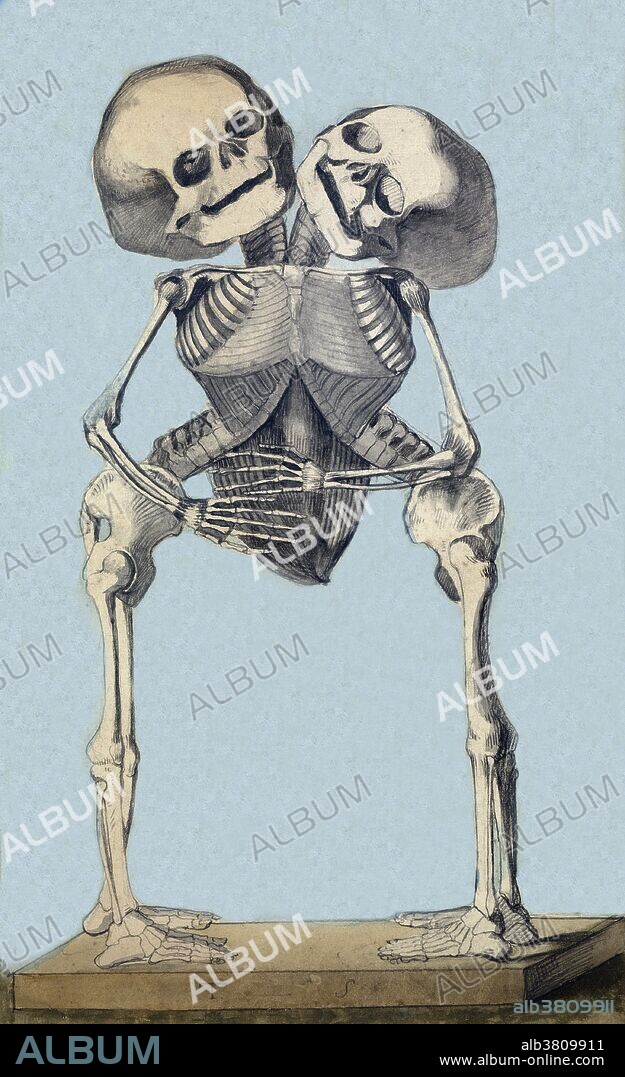alb3809911
Conjoined Twins Skeleton, 19th Century

|
Zu einem anderen Lightbox hinzufügen |
|
Zu einem anderen Lightbox hinzufügen |



Haben Sie bereits ein Konto? Anmelden
Sie haben kein Konto? Registrieren
Dieses Bild kaufen.
Nutzung auswählen:

Titel:
Conjoined Twins Skeleton, 19th Century
Untertitel:
Siehe automatische Übersetzung
Skeleton of conjoined twins. Conjoined twins are identical twins born with their bodies joined at some point and having varying degrees of residual duplication, a result of the incomplete division of the ovum from which the twins developed. An extremely rare phenomenon, the occurrence is estimated to range from 1 in 49,000 births to 1 in 189,000 births, with a somewhat higher incidence in Southeast Asia and Africa. Approximately half are stillborn, and an additional one-third die within 24 hours. Most live births are female, with a ratio of 3:1. Appears to be a thoraco-omphalopagus (28% of cases): two bodies fused from the upper chest to the lower chest. These twins usually share a heart, and may also share the liver or part of the digestive system OR Thoracopagus (18.5%): two bodies fused from the upper thorax to lower belly. The heart is always involved in these cases.
Bildnachweis:
Album / Science Source / Wellcome Images
Freigaben (Releases):
Model: Nein - Eigentum: Nein
Rechtefragen?
Rechtefragen?
Bildgröße:
2930 x 4800 px | 40.2 MB
Druckgröße:
24.8 x 40.6 cm | 9.8 x 16.0 in (300 dpi)
Schlüsselwörter:
 Pinterest
Pinterest Twitter
Twitter Facebook
Facebook Link kopieren
Link kopieren Email
Email
